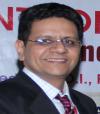I Am Neuro Patient With Right Side Paralytic. On Tracheostomy. What Test Should Be Done?

 Tue, 24 Jul 2012
Answered on
Tue, 24 Jul 2012
Answered on
 Mon, 13 Aug 2012
Last reviewed on
Mon, 13 Aug 2012
Last reviewed on
any tests that can confirm tracheostomy cannot be removed.
any chances of speech revival in same patient.
Thank you for your query.
1. Decannulation (removal) of a tracheostomy tube depends on many factors.
2. A videolaryngoscopy will confirm the patency of the upper airway and presence or absence of vocal cord movements. Aspiration may be observed.
3. In the oral examination, the gag reflex is elicited. The patient should have a clear chest X-ray and good pulmonary reserve. There should be no requirement of a ventilator to assist breathing. On chest auscultation, the air entry into the lungs should be checked. The cough reflex should be robust. There should not be copious or thick secretions. There should be no aspiration of saliva or fluid into the airway. A trial of swallowing may be given or a water soluble XXXXXXX study with X-rays may be done.
4. After so many months it requires more effort to breathe normally and hence a trial by partially blocking the tracheostomy tube with cuff deflation (Portex tube) is given for a day or two. (It is not clear which type of tracheostomy tube is being used at present - Portex (blue line) or Metallic). The tube size may also be reduced progressively. The oxygen saturation in the blood and carbon dioxide buildup may be monitored on a pulse oximeter. If there is no respiratory distress, the decannulation may be done and the tracheostomy wound strapped. It heals well on it's own usually.
5. Voice and speech recovery is possible if the vocal cords are not paralyzed. Even if one side is completely paralyzed due to the stroke (and has not recovered), with speech therapy the other cord will compensate and the voice will improve. Thyroplasty and fat injection medialization are possible if a phonatory gap persists. It is difficult to treat aspiration (superior laryngeal nerve injury). If the tracheostomy tube cannot be removed and if there is no upper airway obstruction, an advanced tracheostomy tube (Tracoe) speaking valve (Paasy Muir) may be used.
6. I must emphasize that the decision whether to remove the tracheostomy or not should be left to your doctor's judgement.
I hope that I have answered your queries. If you have any further questions, I will be available to answer them.
Regards.
Answered by

Get personalised answers from verified doctor in minutes across 80+ specialties



